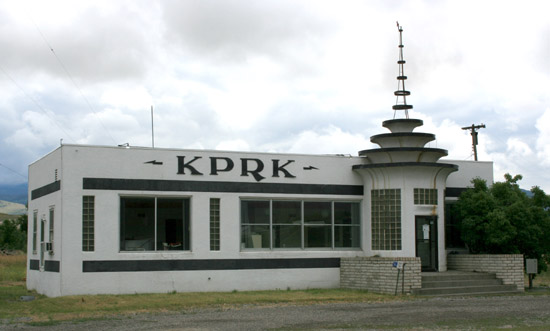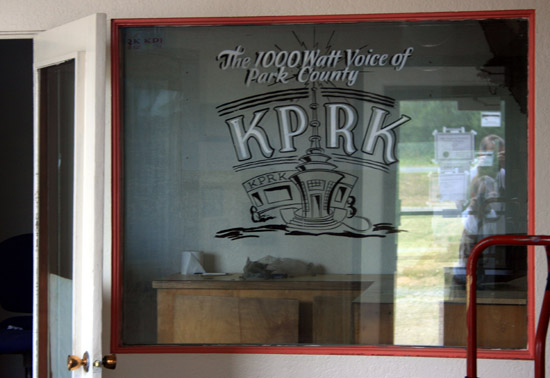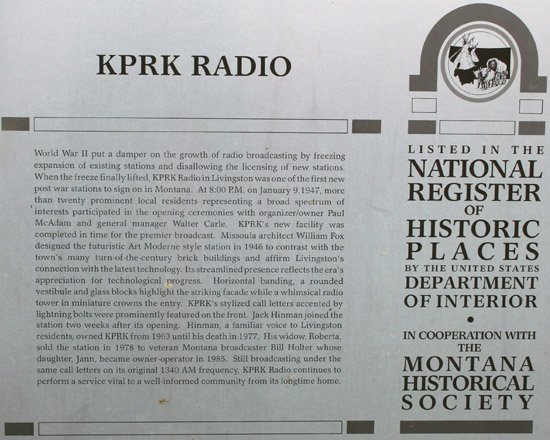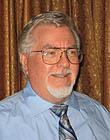|
|
This topic comprises 2 pages: 1 2
|
|
Author
|
Topic: Way Cool Radio Station: KPRK
|
|
|
|
|
|
|
|
|
James Westbrook
Phenomenal Film Handler
Posts: 1133
From: Lubbock, Texas, Usa
Registered: Mar 2006
|
 posted 07-30-2009 09:41 PM
posted 07-30-2009 09:41 PM




I am afraid you are probably right, Robert.
I just did a Google search and found the station is currently owned by Gapwest Broadcasting. A sister company, Gap Broadcasting out of Dallas, acquired a bunch of the Clear Channel stations in Lubbock (including 1340 KKAM), Amarillo, Abilene, Midland-Odessa, Texarkana, Victoria, Lawton Ok, Wichita Falls and several others.
The Lubbock stations do not sound much different than they did during their Clear Channel days except there seem to be fewer announcers.
According to their website, KPRK seems to be talk radio formatted, carrying the syndicated Rush Limbaugh and Glenn Beck among others.
KPRK's website looks quite similar to the Gap stations websites, which all appear to have been designed by the same people using the same program.
There are some local radio out there still, but almost all use computer based automation and or satellite based networks for programming.
| IP: Logged
|
|
|
|
|
|
|
|
|
|
|
|
Paul Mayer
Oh get out of it Melvin, before it pulls you under!

Posts: 3836
From: Albuquerque, NM
Registered: Feb 2000
|
 posted 07-31-2009 12:48 PM
posted 07-31-2009 12:48 PM





I used to hang in the booth at KORK-AM 920 on Sunday evenings back in the mid-70's. The DJ was Bob Amblad, formerly of Chicago's WBBM - I was a teacher's aide for him during the week at Woodbury Junior High, where we taught a then-mandatory 8th-grade TV and radio media course.
KORK's format then was MOR (Middle Of the Road), sort of a precursor to today's Adult Contemporary. The station doesn't exist anymore, 920 is now KBAD, and the building was replaced by the east leg of I-515.
For Scott, at MF freqs power is main game for reception distance. A typical 1000 watt signal will go 45 miles or so.
The antenna is usually spotted where a good RF ground is available. Height doesn't mean much at these freqs.
At VHF freqs antenna height becomes important. That's why you see FM and TV antennas on mountain tops or very tall buildings, or very tall towers.
Yes, that KPRK building is very cool! ![[thumbsup]](graemlins/thumbsup.gif)
| IP: Logged
|
|
Jack Ondracek
Film God

Posts: 2348
From: Port Orchard, WA, USA
Registered: Oct 2002
|
 posted 07-31-2009 01:25 PM
posted 07-31-2009 01:25 PM





quote: Scott Norwood
What kind of range do you get with 1000 watts? Is the relationship between watts and coverage area linear (i.e. doubling of power doubles the radius of the coverage area), or is it more complicated? And what about stations with a directional pattern?
You don't get nearly the range you did when the dial was less congested. Close spacing and skywave interference have effectively cut many stations' local coverage in half. In our area (Seattle), a 1,000 watt station could get out to 25 miles or so during the day, but that same power at night may only be good for 10... sometimes less. Most low power stations in our area have become useless, due to urban sprawl and skywave interference. However, this doesn't apply to everyone. Some stations still enjoy huge night coverage, but it's usually more a matter of what's also on the dial on and around your frequency than anything special you've done. Clear channel protection is pretty much gone, because our government has decided there's enough media out there that everyone can pick up a good(?) cross section of signals and programming.
AM stations that broadcast in our current form of "stereo" are causing serious interference to other stations on adjacent channels. In the cases I know of personally, fringe reception for the adjacent stations is pretty much gone. However, it's all legal, because fringe reception is not protected by the FCC.
Frequency makes a difference. Stations at the lower end of the AM dial go farther for a given power than stations at the upper end.
Tower placement makes a difference. Towers in swampy cow pastures do better than those in gravel pits. Terrain can have a huge effect on coverage. We have a 10kW station in the area that can't get out 20 miles around mountainous terrain, while getting better than 50 in a flatter direction.
Terrain & conductivity aside, a single tower radiates equally in all directions. Directionalizing is the art of taking power from one direction and adding it to what you're shooting in another... something like squeezing a balloon full of water. Any tower installation you see with more than one tower is creating a directional pattern, though not necessarily all the time. Many stations are non-directional during the day. Others have different patterns for day and night. Most of the time, they're directionalizing in order to protect another station. However, a station can pull power from an unpopulated direction and point it where the people are. It's kind of a trade-off. They don't have to spend the money for larger transmitters and higher power bills, but the initial cost of directional arrays and ongoing maintenance of the system is higher.
Re: power/coverage. It takes 4 times the power to double your coverage, so a 5,000 watt station is roughly better than twice as "powerful" as a 1,000 watter, all else considered.
Finally, there's a certain amount of voodoo involved in all this. You can design a wonderful system on paper, but the end result will frequently be something else... better or worse.
| IP: Logged
|
|
|
|
|
|
Phil Hill
I love my cootie bug

Posts: 7595
From: Hollywood, CA USA
Registered: Mar 2000
|
 posted 07-31-2009 04:27 PM
posted 07-31-2009 04:27 PM



quote: Scott Norwood
It's interesting to see how many people here have been involved with radio and/or television as well as film...
While I really enjoyed broadcasting for many years, my 1st LOVE was film since I was 13.
(Selected "broadcast" clips from my bio...)
My 1st "official" radio job was a transmitter guy at WJBK AM when I was 19. A 50kW AM 6-tower directional radio station in Detroit. My buddies and me used to see who could stand the most RF by walking our fingers up the antenna tower base-loading coil to see how much "heat" we could stand! GOD!!!! We stupit at 19...huh?!!!! But we had fun!
I then went on to be that "Sunday-Night-DJ" at WPON AM in Pontiac Michigan and played "vinyl records" and yakked live for 4 hours a week giving the weather, the news, commercials, and my feelings...8pm 'til midnight!
The 1kw xmtr was remotely located from the studio and the xmtr guy and I would have races to see who could kill the transmitter 1st at the end of the day after the national anthem was played. I "won", since one time, I cut the power at the beginning of the NA. Ummmm, that was the last show I did for them! What a bunch of "Sticks-In-The-Mud" jerks! They just could NOT take humor!
While in college, I worked at a 141kW ERP FM stereo broadcast station as a DJ and transmitter guy. I used to like to turn off and on the 19kHz stereo pilot in between the records I was playing. The effect was to blink everyone's "STEREO" light/indicator on and off in the area we covered. God forgive me, oh, and the FCC but, I used to blink them on and off in Morse code sending "sex" messages! You would not believe the phone calls I got from listeners. God! It WAS soooo funny!
Ahhhh, to be young and "learning" the ways of the world. I was such a pistol!!!!
---------------------
And yes, that KPRK building is super cool! It would make a great diner!
| IP: Logged
|
|
|
|
All times are Central (GMT -6:00)
|
This topic comprises 2 pages: 1 2
|
Powered by Infopop Corporation
UBB.classicTM
6.3.1.2
The Film-Tech Forums are designed for various members related to the cinema industry to express their opinions, viewpoints and testimonials on various products, services and events based upon speculation, personal knowledge and factual information through use, therefore all views represented here allow no liability upon the publishers of this web site and the owners of said views assume no liability for any ill will resulting from these postings. The posts made here are for educational as well as entertainment purposes and as such anyone viewing this portion of the website must accept these views as statements of the author of that opinion
and agrees to release the authors from any and all liability.
|

 Home
Home
 Products
Products
 Store
Store
 Forum
Forum
 Warehouse
Warehouse
 Contact Us
Contact Us




 Printer-friendly view of this topic
Printer-friendly view of this topic














![[Roll Eyes]](rolleyes.gif) (I see these people all the time now in this industry.) Louis
(I see these people all the time now in this industry.) Louis



![[thumbsup]](graemlins/thumbsup.gif)





